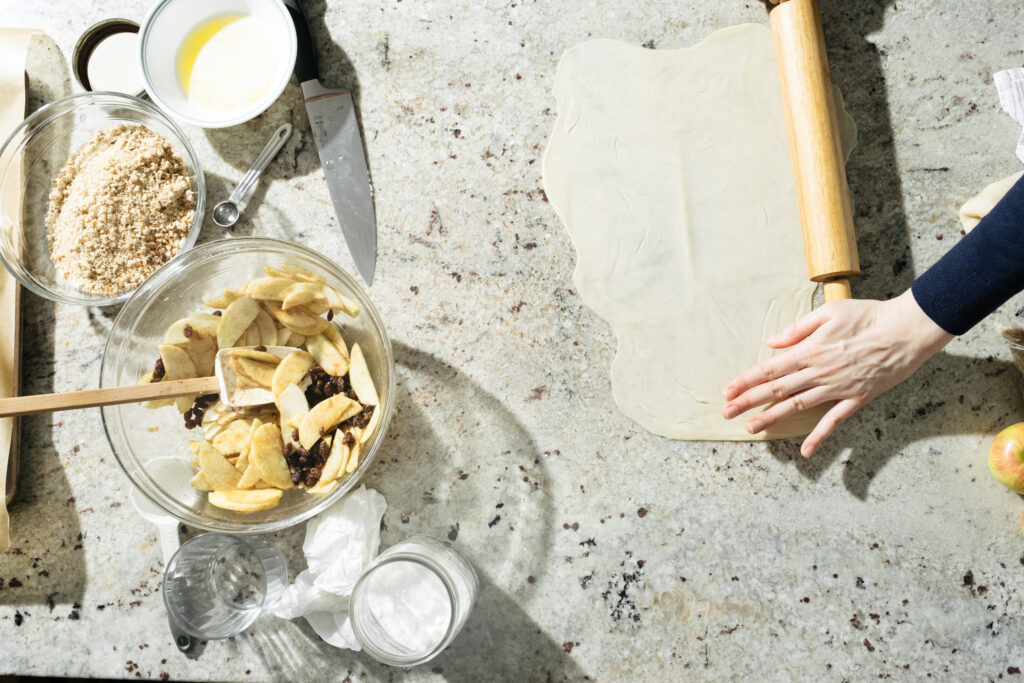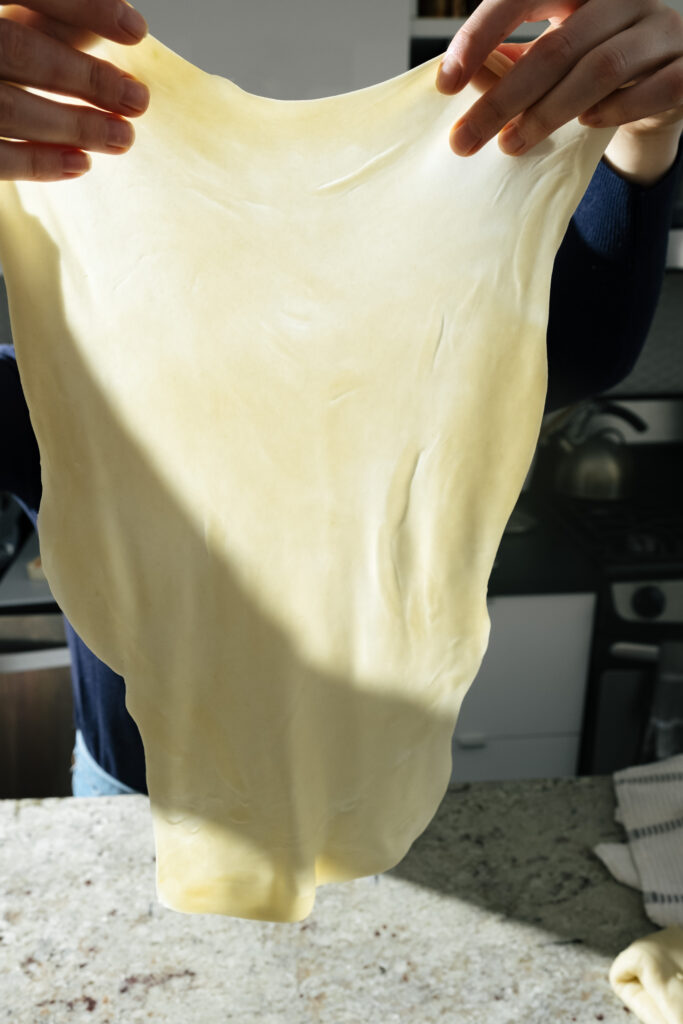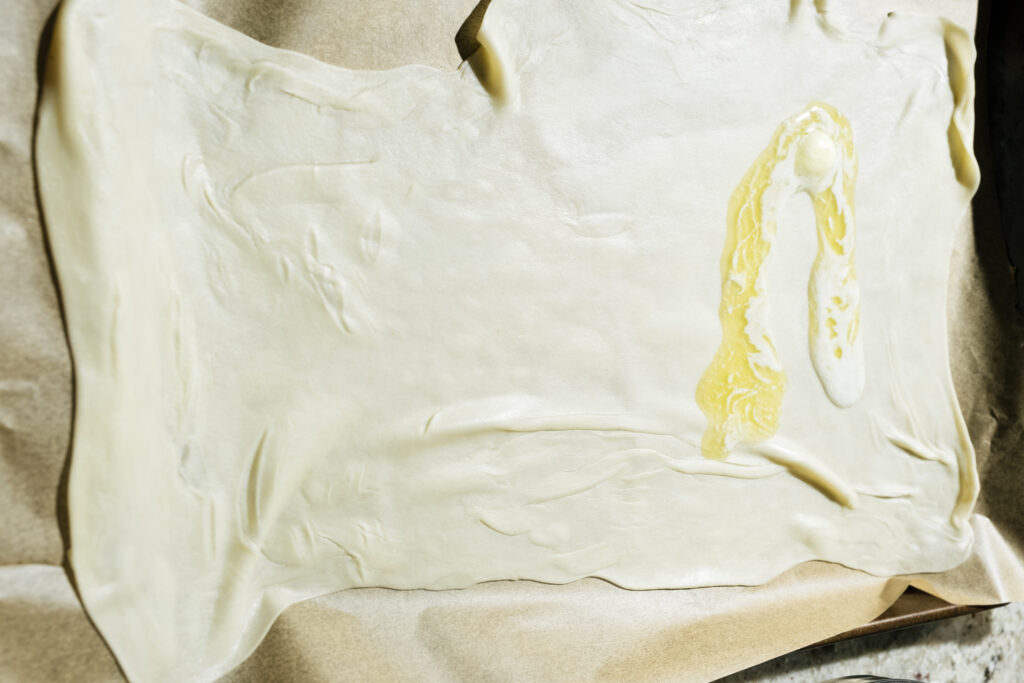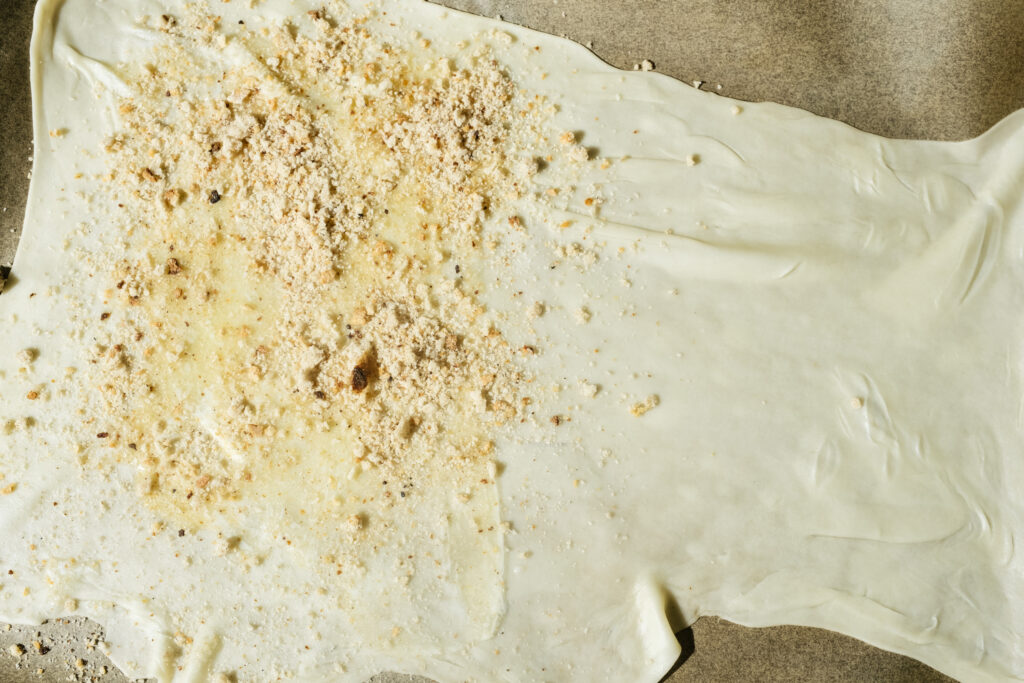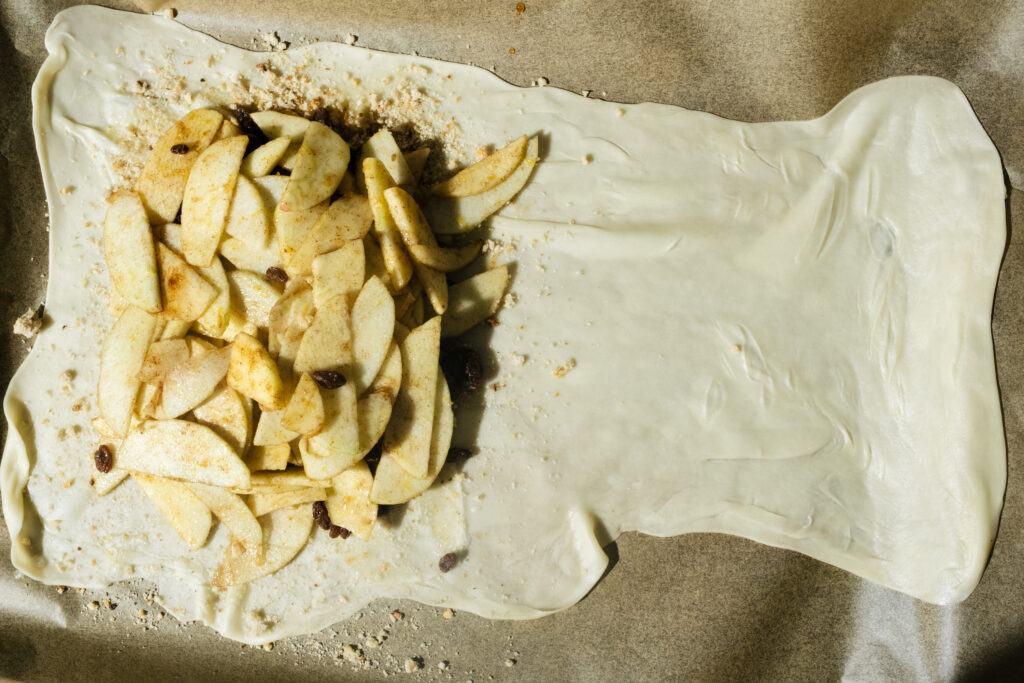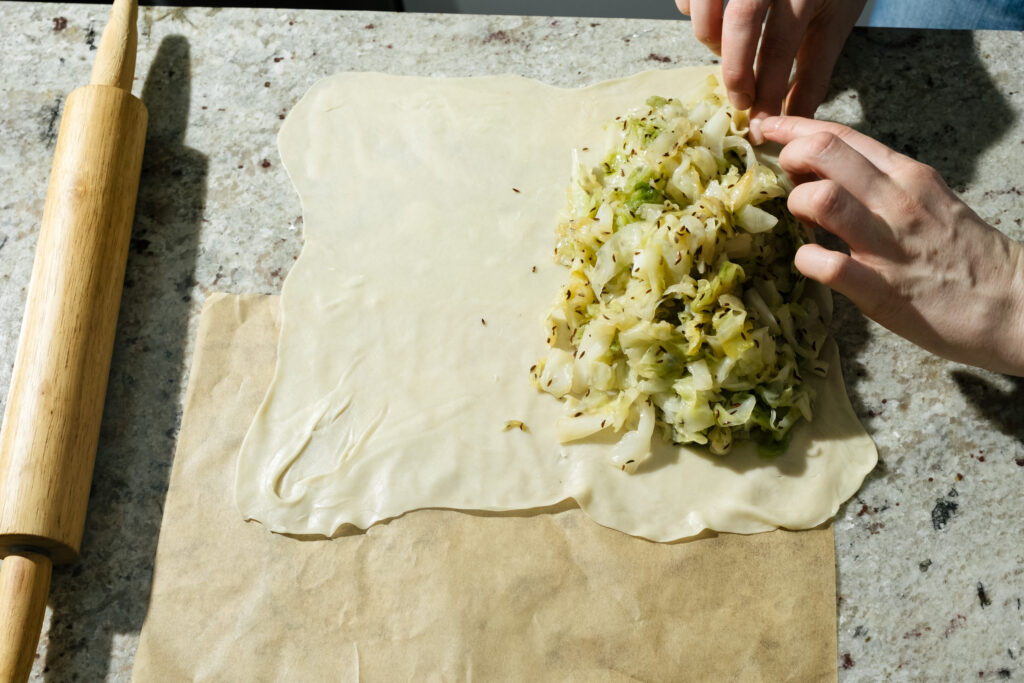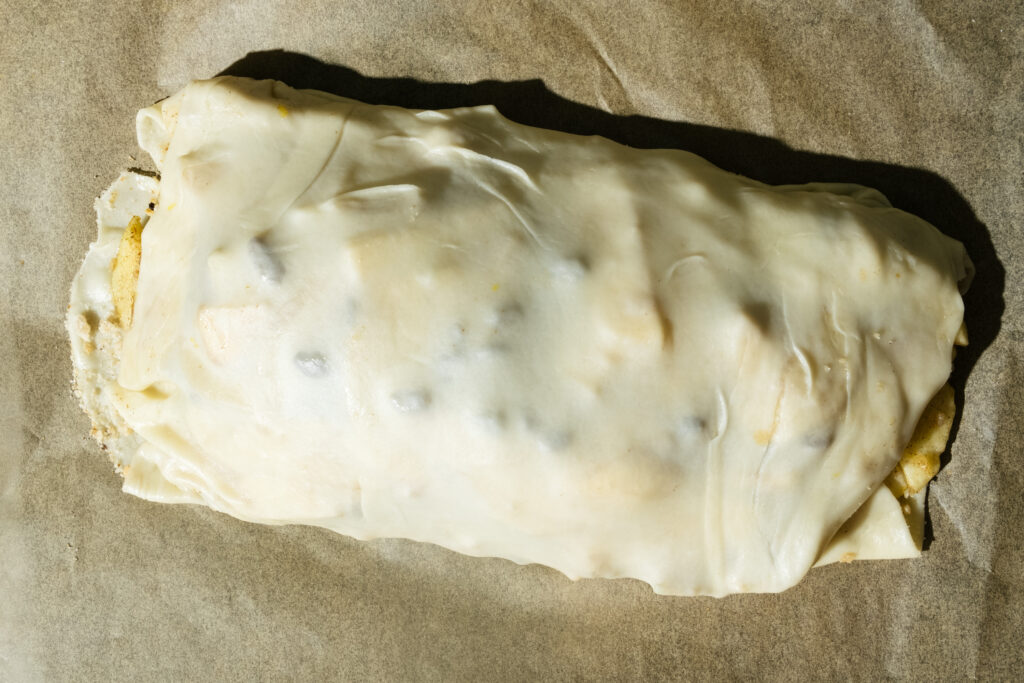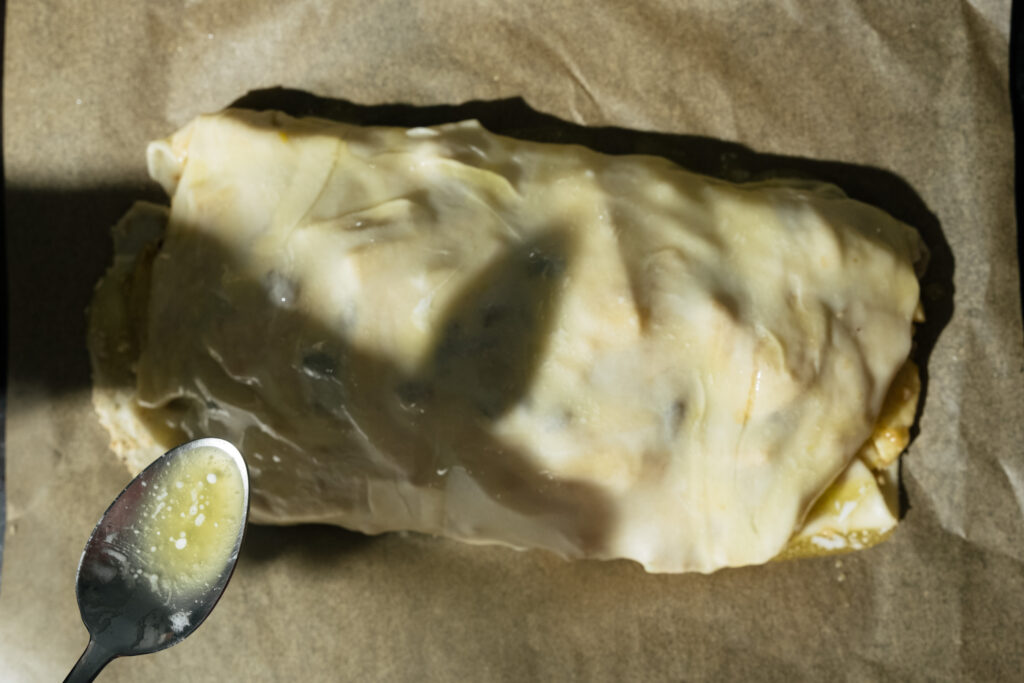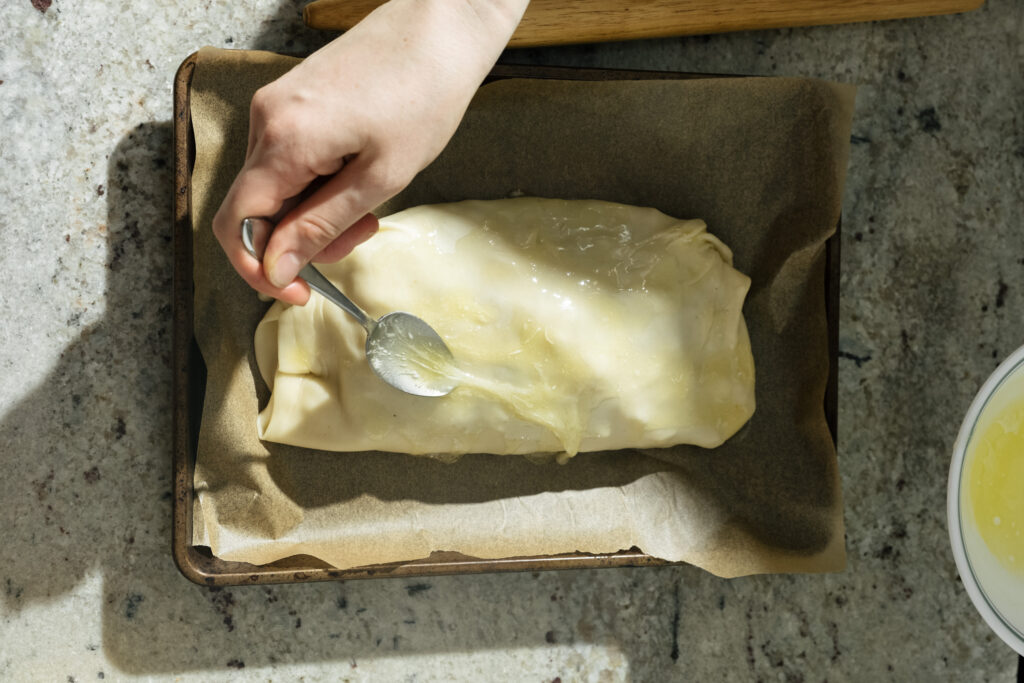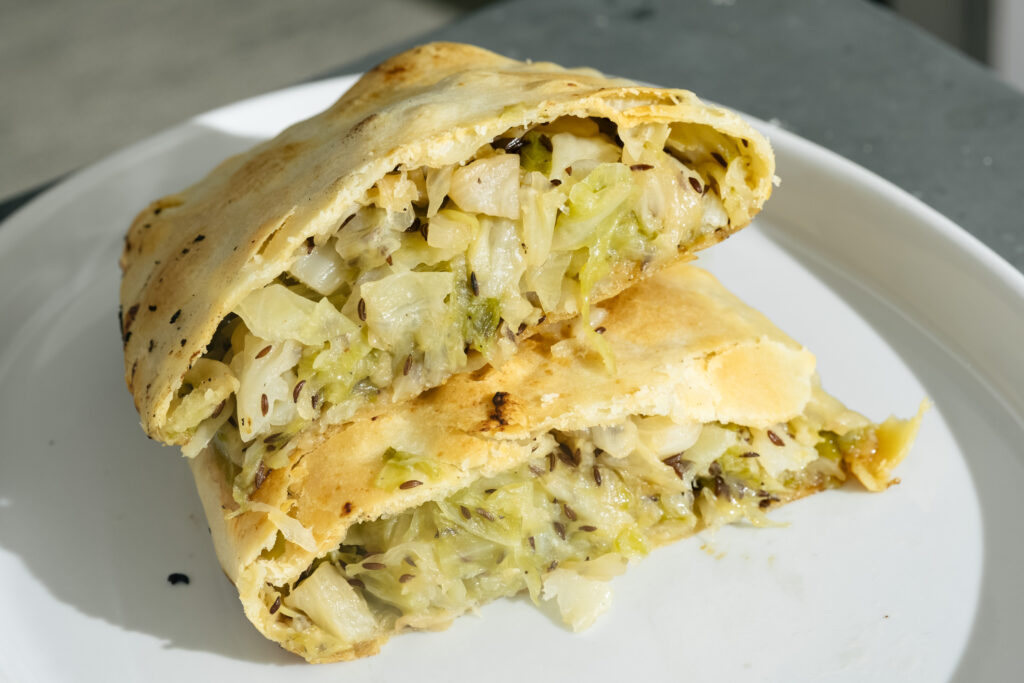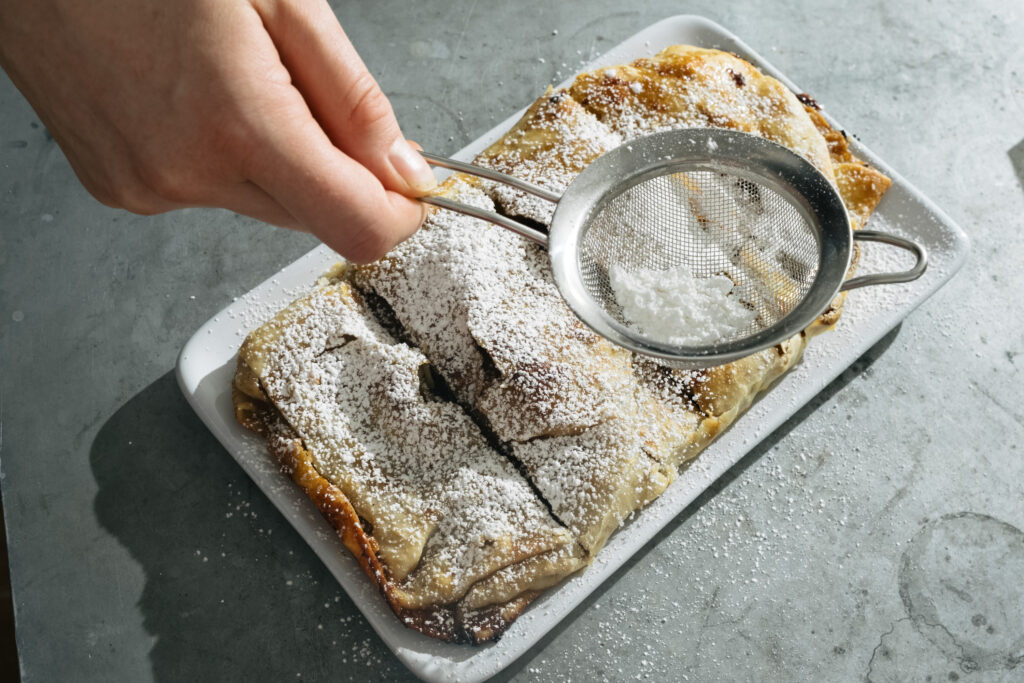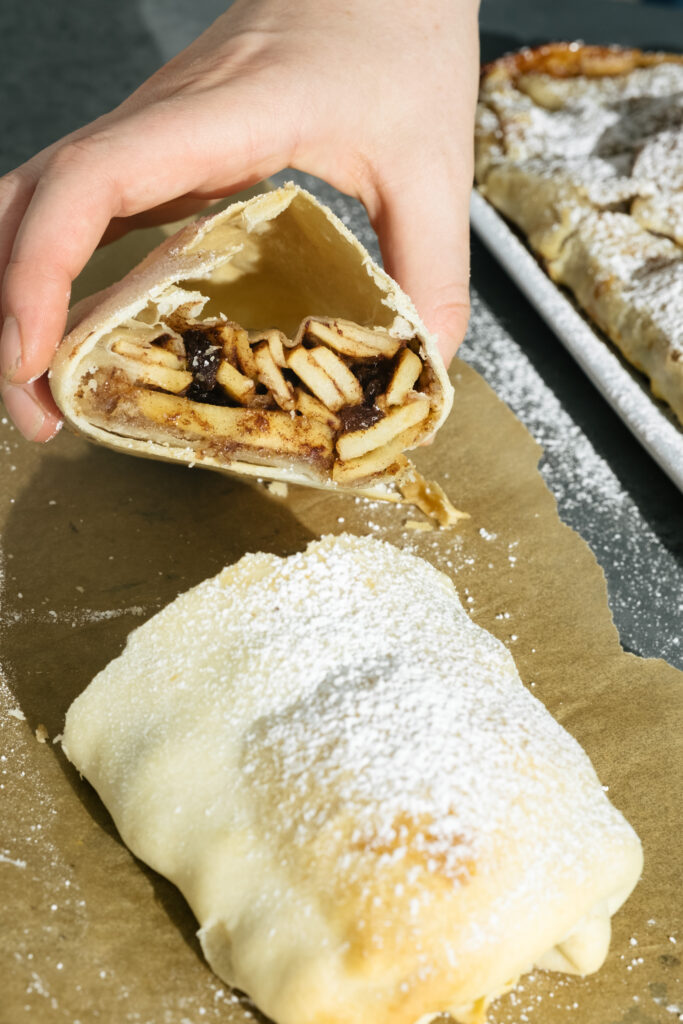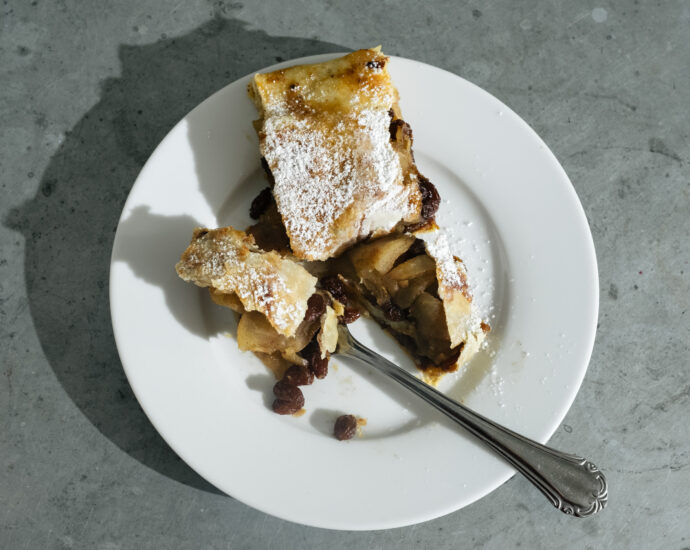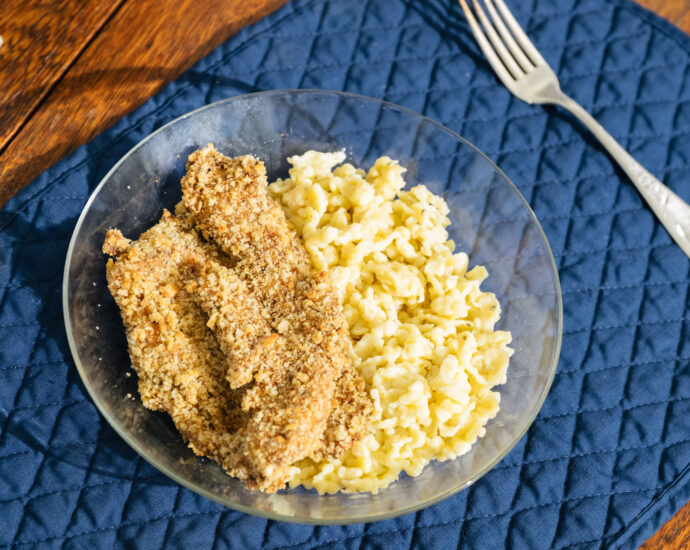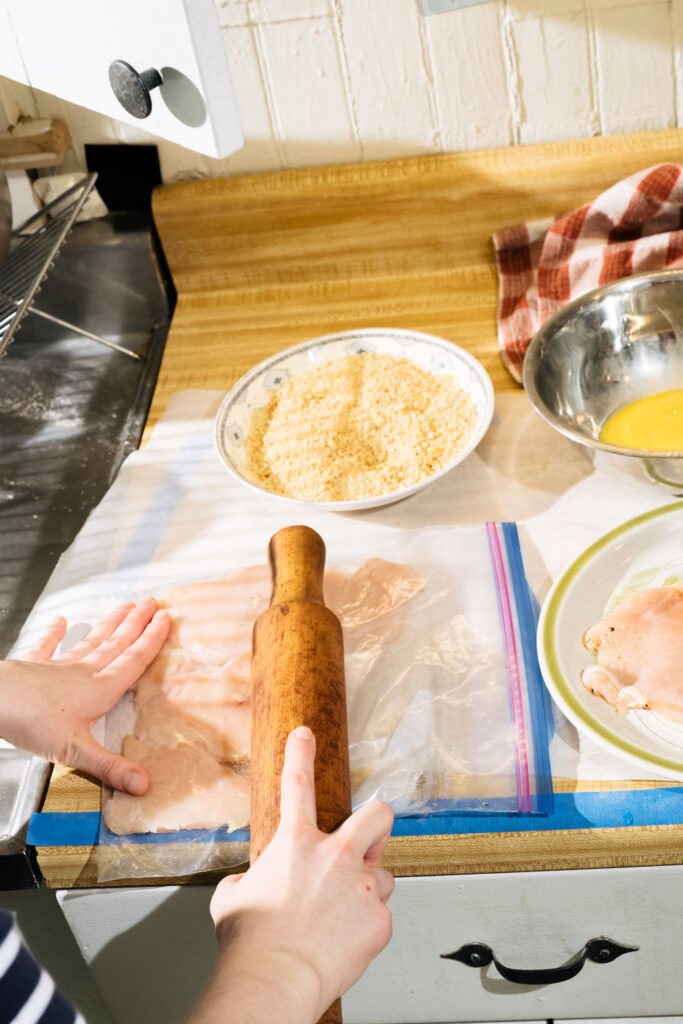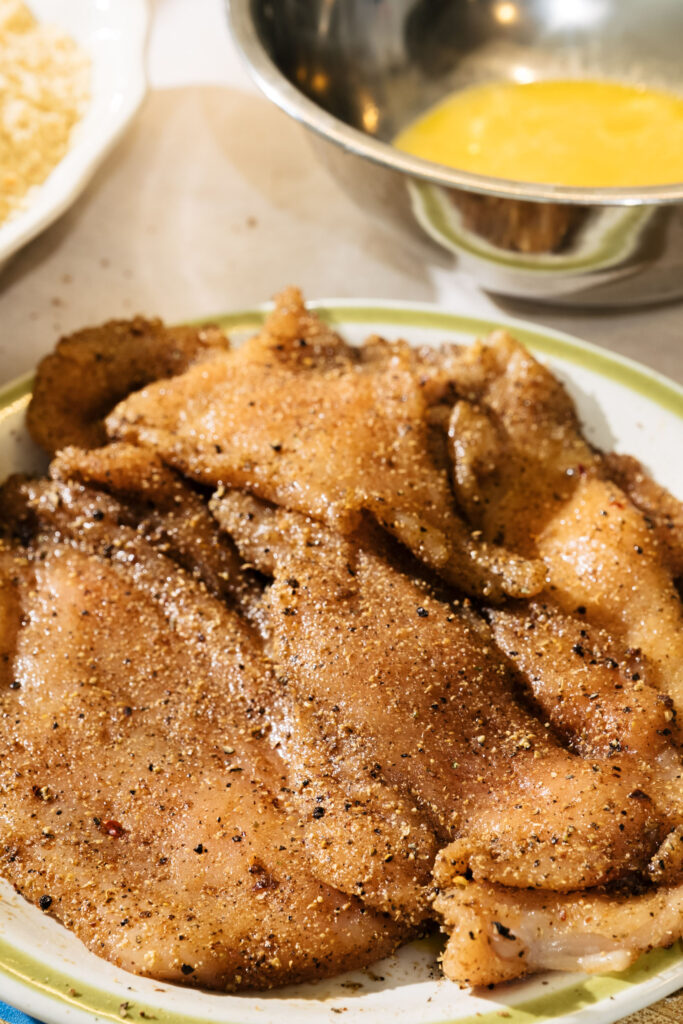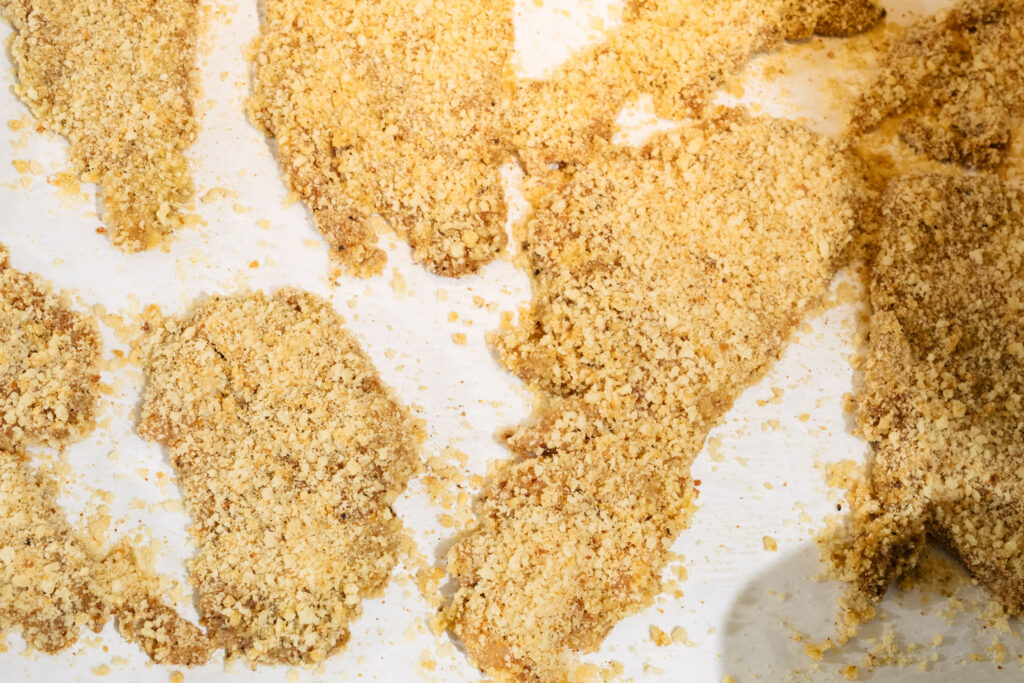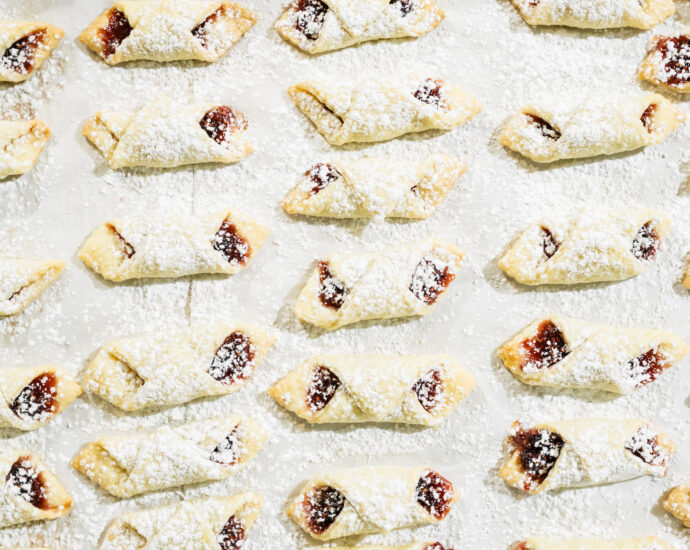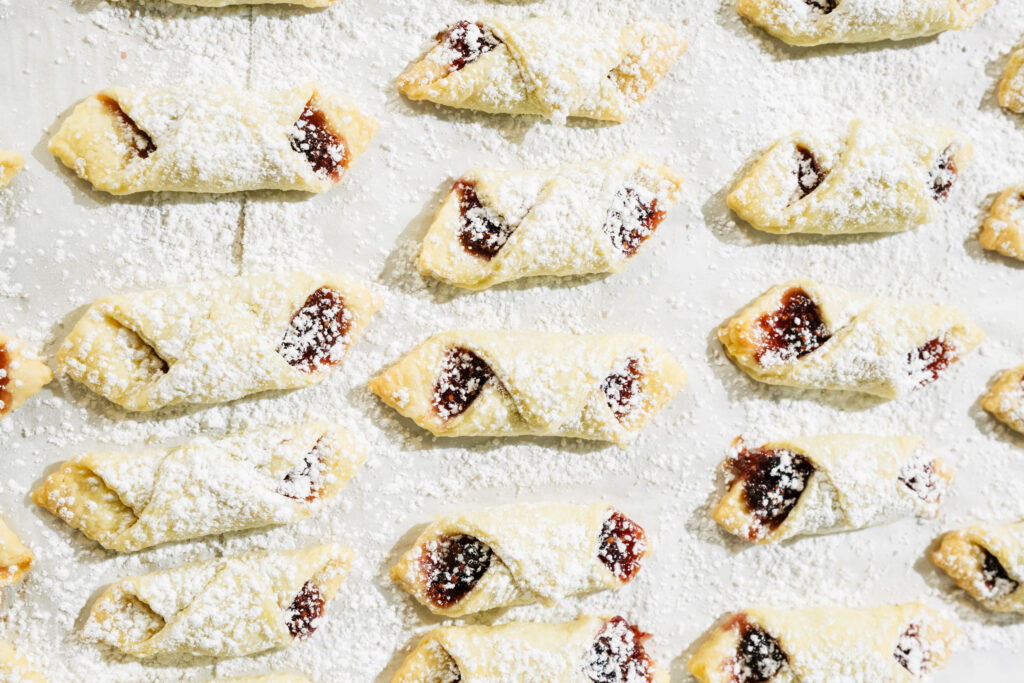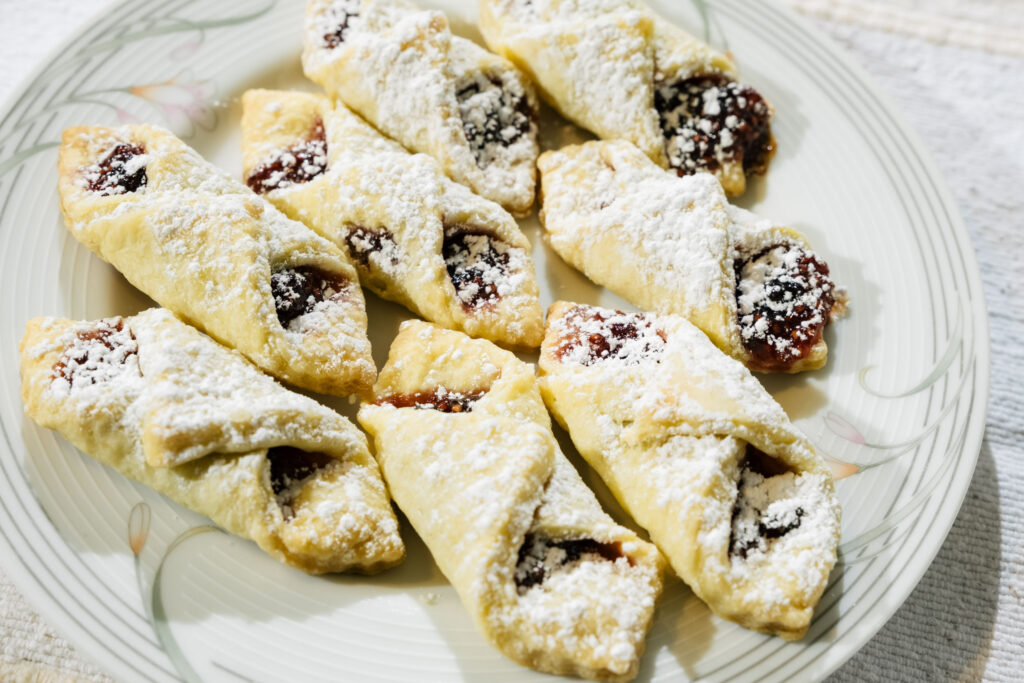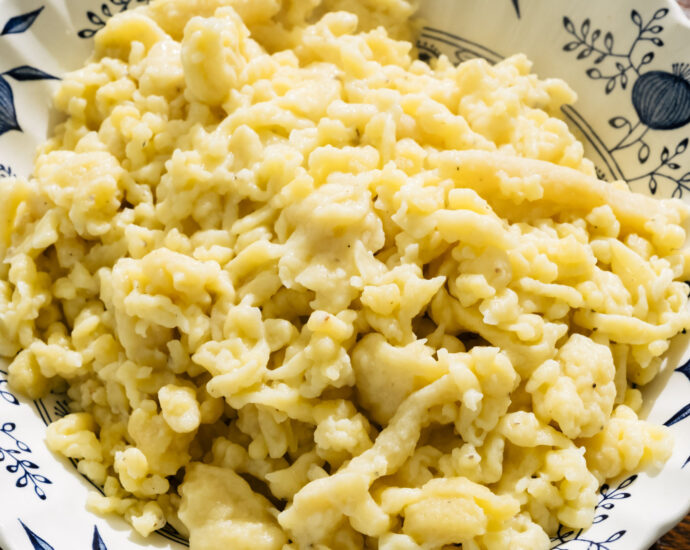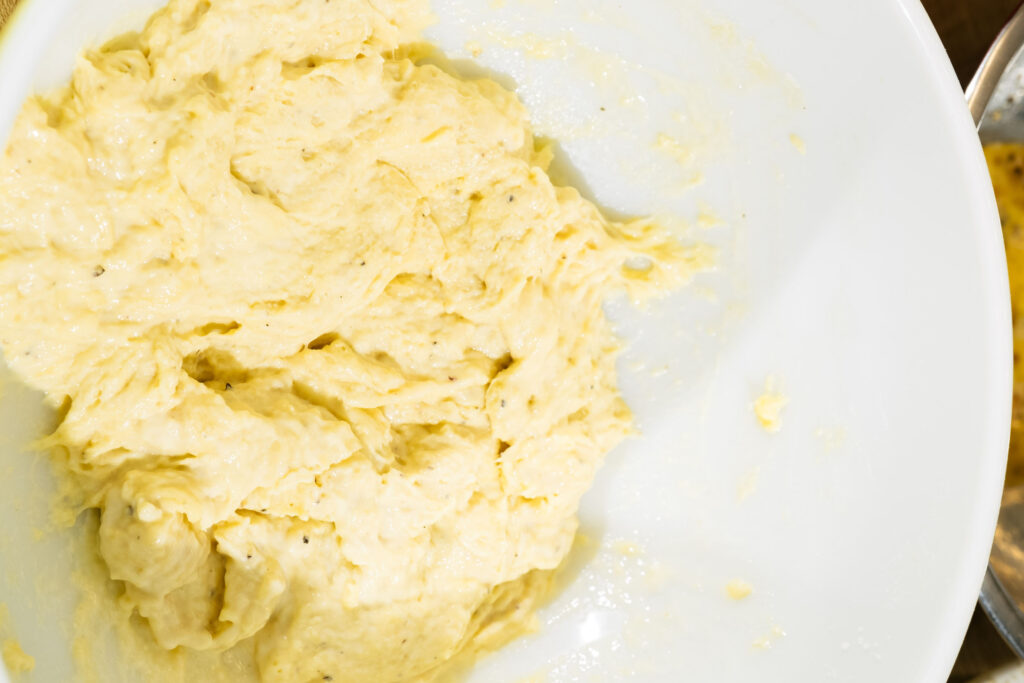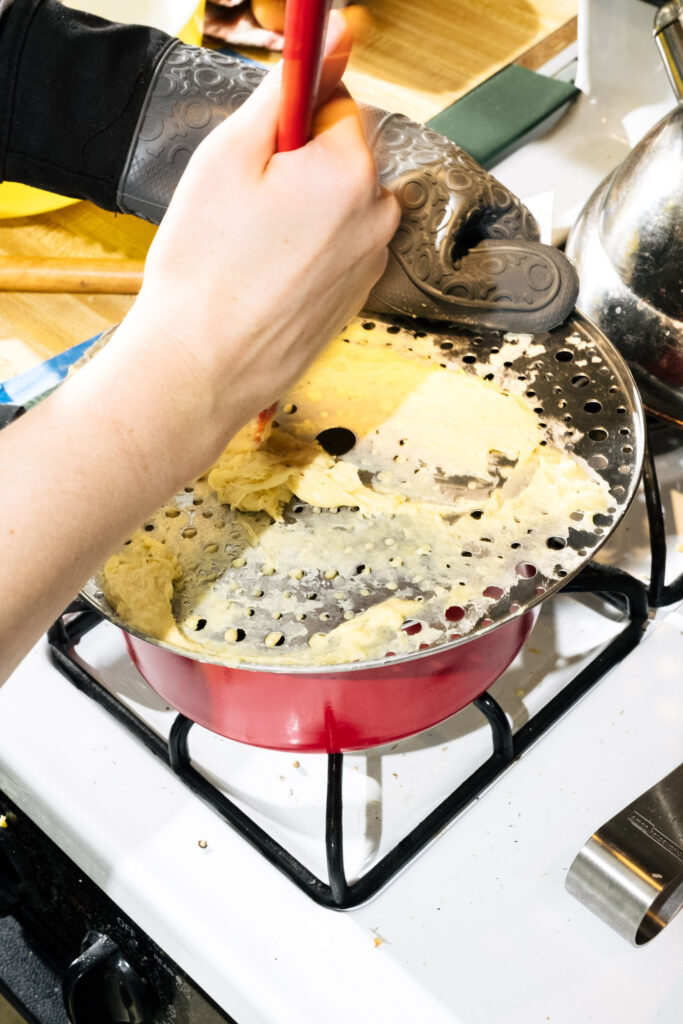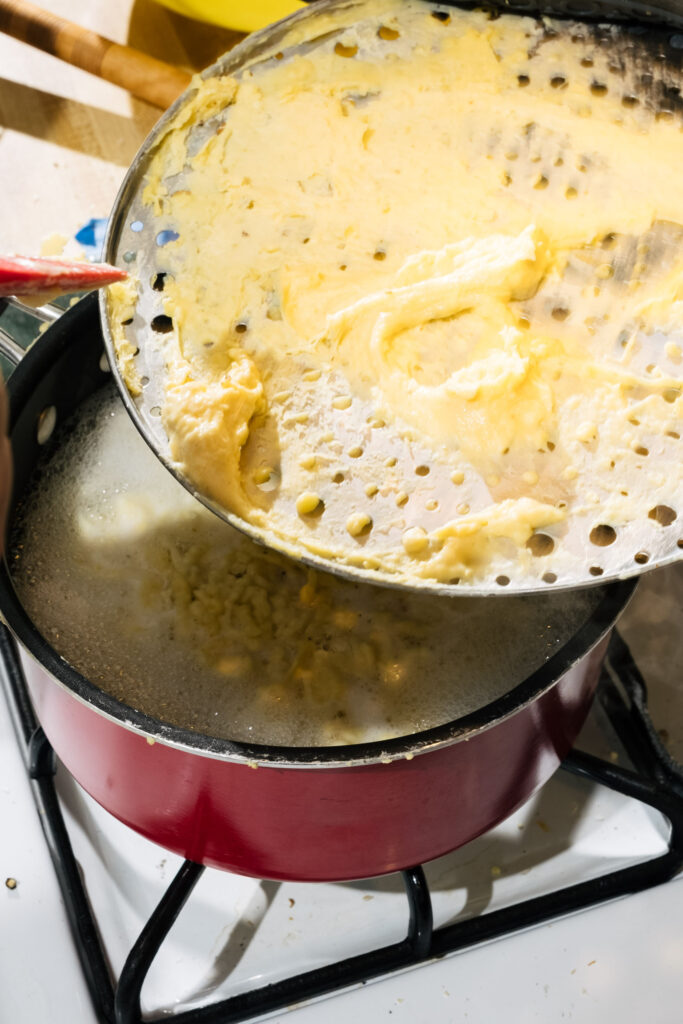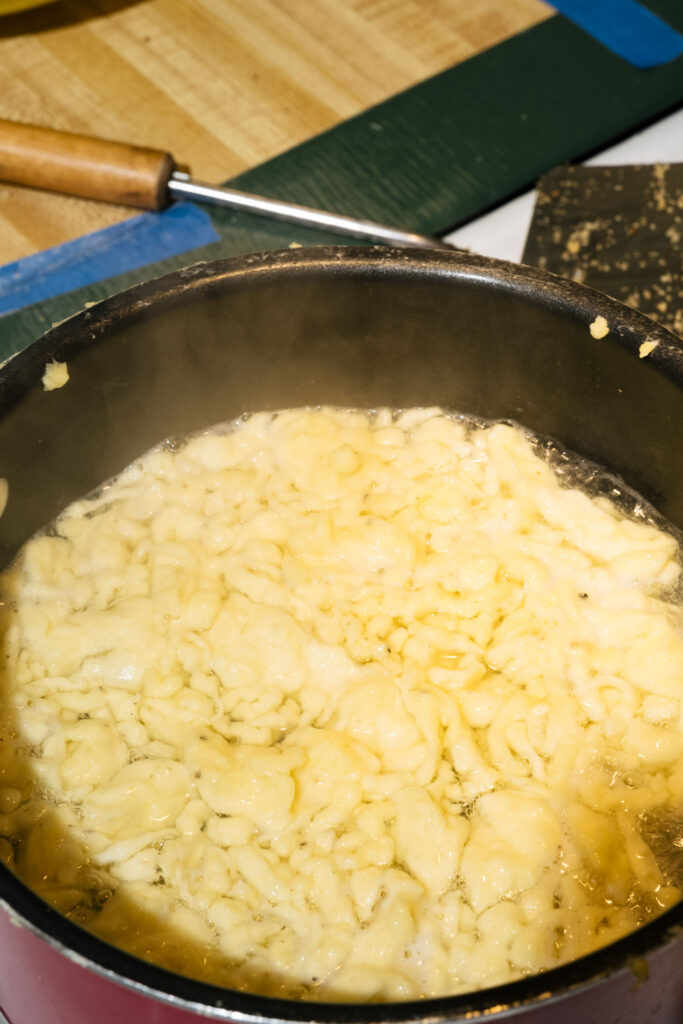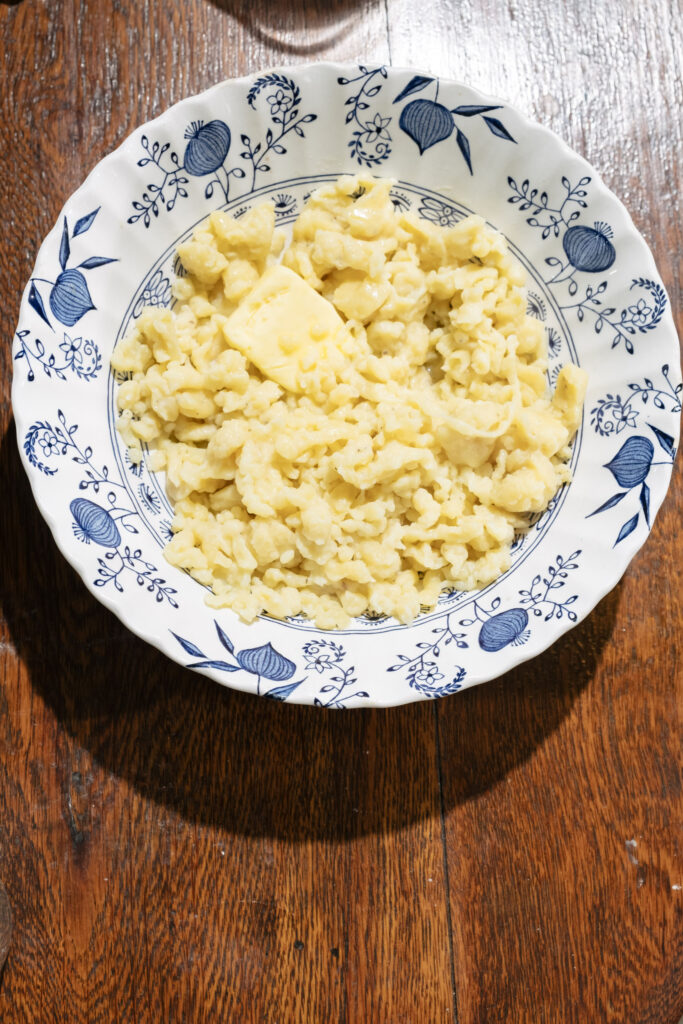austrian strudel
Strudel is a fundamental part of Austrian cuisine as well as its famous coffee culture. Who couldn’t love flaky apfelstrudel (apple strudel) as a delicious breakfast or midday snack with a cup of coffee? I can personally enjoy it any time of day – kind of like its savory relative, cabbage strudel.
Cabbage sauteed in olive oil and caraway seasoned with salt and pepper is folded into the paper-thin strudel dough, brushed in butter, and baked until crispy. Cabbage strudel is incredibly inexpensive to make and is deeply comforting.
I always love hearing my mom’s stories about her grandmother rolling out the strudel dough on a large tablecloth and how she would help roll it up. Something about this just makes my soul feel warm.
Here, I split the dough into two smaller portions to make it more manageable while retaining that classic strudel flavor and texture.
Note about flour: my family always used Hecker’s flour, but any high-protein flour, like King Arthur, will work.
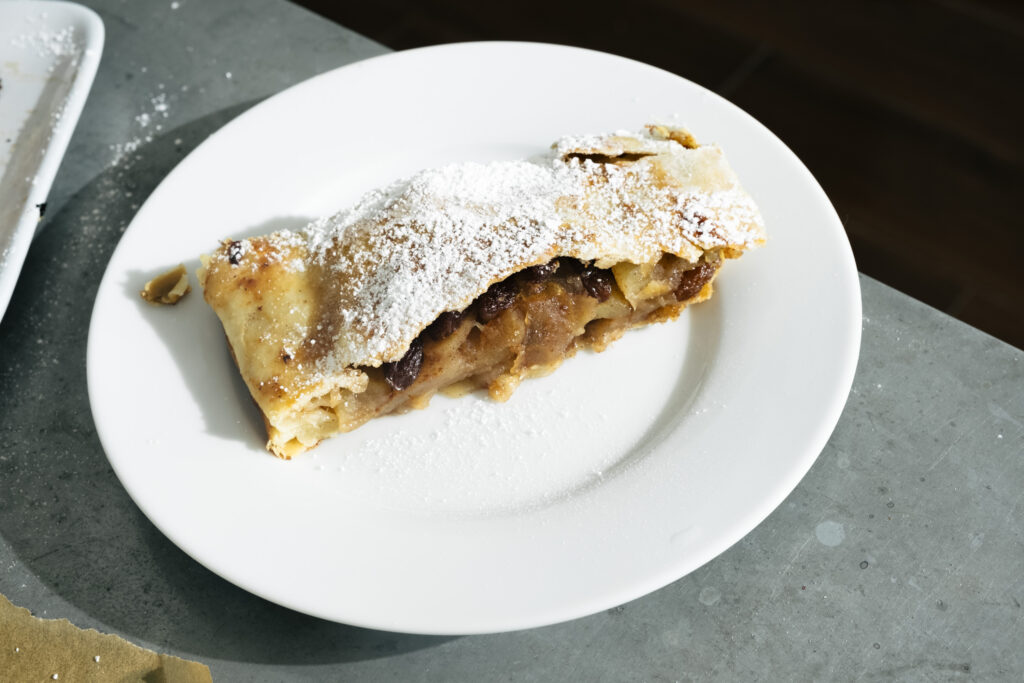
ingredients
for the dough
- 1 ¼ cups flour
- ¼ teaspoon salt
- 4 tablespoons neutral oil, divided
- ⅓ cup lukewarm water
- Flour for rolling out dough
for the apple filling
- 4 tart, crisp apples, peeled, cored, and thinly sliced
- 1 teaspoon lemon zest
- ¼ cup sugar
- ½ cup raisins
- ½ teaspoon cinnamon
- 4 tablespoons butter, melted, divided
- ½ cup breadcrumbs
for the cabbage filling
- 2 tablespoons olive oil
- ½ large head of cabbage (about 2 cups) cut into ½ inch strips
- 2 teaspoons caraway seeds
- 1 teaspoon salt
- ¼ teaspoon freshly ground black pepper
for brushing the strudel
4 tablespoons (½ stick) butter, melted
dough steps
Place the flour and salt in the bowl of a stand mixer and mix with the paddle. Slowly add in the water and 3 tablespoons of the oil and mix until combined. Replace the paddle with the dough hook and knead for 5 minutes until the dough is soft and pliable. Coat a medium-sized bowl with the remaining 1 tablespoon of oil and place the dough inside. Cover and let sit for 30 minutes to let the gluten relax.
apple filling steps
In a large bowl, combine the apples, lemon zest, sugar, raisins, and cinnamon. Mix thoroughly and let sit.
cabbage filling steps
Heat the olive oil in a large pan over medium-high heat. Add the caraway seeds and toast them for 5 minutes, then add the cabbage, salt, and pepper. Let cook, stirring occasionally.
assembly steps
Preheat the oven to 425°F. Divide the dough in half and starting with the first half, roll out as thinly as possible on a lightly flour surface, using a rolling pin. Lift the dough from the surface and slowly and carefully stretch it by rotating it in the air. Place the thin dough on a piece of parchment paper and brush with butter. Cover ⅓ of the surface area with breadcrumbs and layer on the apple mixture. Fold over the sides and slowly roll the dough over itself from the filled side. Place on a baking sheet and brush with melted butter.
Repeat the rolling process with the second piece of dough, place on a sheet of parchment paper, and brush with butter. Then add the cabbage, fold over the sides, and roll up the dough. Place it on a baking sheet lined with parchment paper and brush with butter.
Bake for 45 minutes until golden brown and flaky. Dust the apple strudel with powdered sugar before serving. Enjoy the strudel hot or cold!
